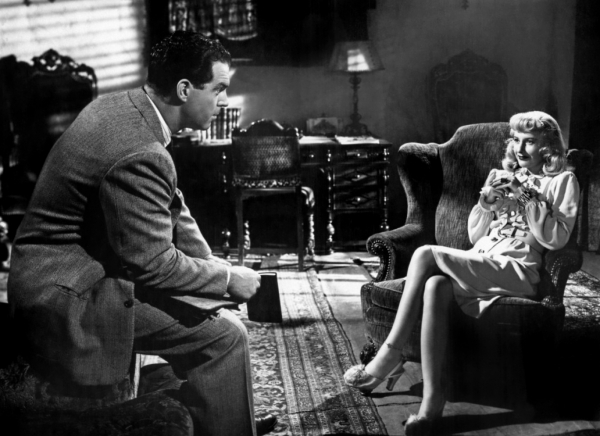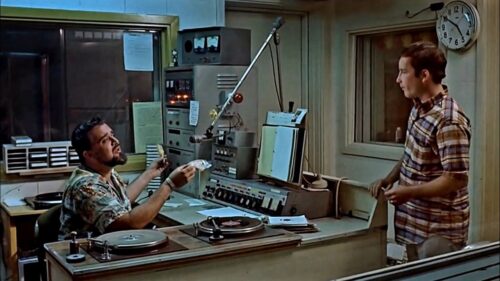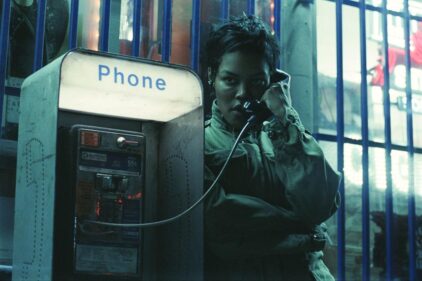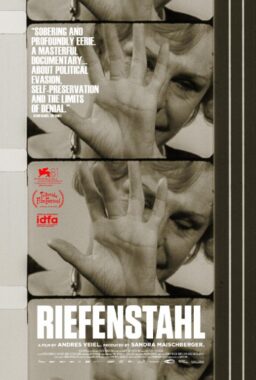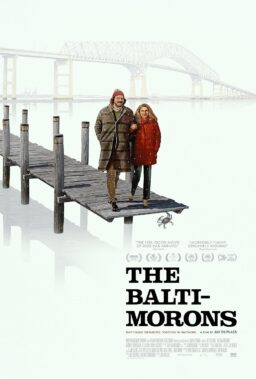Making direct comparisons between a motion picture and the text from which it’s been adapted is, more often than not, a mug’s game. But every so often a particular difference in detail will yield, at the very least, food for thought. Going through James M. Cain’s 1936 novel “Double Indemnity” a little while back, of course I did notice that here Cain’s Walter Huff, the narrator (he would be Walter Neff in director Billy Wilder’s immortal 1944 movie), has a somewhat gruffer tone than the brittle wannabe smoothie played by Fred MacMurray. In Cain the femme fatale is Phyllis Nirdlinger, and in the Wilder film, on which Wilder collaborated with Raymond Chandler for the script, she is Phyllis Dietrichson. And so on. What surprised me, though, was the absence of anklet.
In the Wilder movie, after settling in at his desk to make his confession, the dying Walter Neff sets the scene, and the time—1938, two years after the Cain novel was published, six years before the movie was released, making it, in a sense, a sort of period piece. Neff recalls the then-diligent insurance man he was, before he met Mrs. Dietrichson on that day in May: “I’d been out to Glendale to deliver a policy on some dairy trucks. On my way back I remembered this auto renewal near Los Feliz Boulevard, so I drove over there. It was one of those California Spanish houses everyone was nuts about ten or fifteen years ago. This one must have cost somebody thirty thousand bucks. That is if he ever finished paying for it.” (One could write a miniature essay on the Wilder/Chandler gloss on Spanish-style houses in Los Angeles in the 1930s, by the way.) After getting by the cranky maid, and getting a load of the just-summoned-in-from-sunning-herself Phyllis, who, at this point, could still be mistaken for a relatively wholesome specimen, Neff observes the living room dust and soon Phyllis makes her proper entrance. Wilder’s camera, overseen by the exceptional John Seitz, sets itself a little back of the banister of the staircase from which she descends, catching the glint of gold reflecting off of the anklet she wears around her left leg.
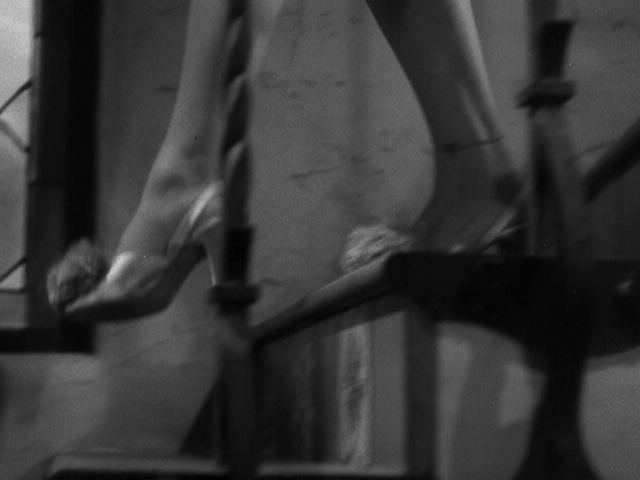
It’s a shapely leg; Barbara Stanwyck, who portrays Phyllis, certainly had the erotic quality we sometimes call “it,” and had it in quantities to spare. But the anklet sets the leg, and the character, very particularly. The wearing of anklets by women in the Western world was/is of course an affectation; the practice hearkens back to older cultures that the West likes to flatter itself in believing it has surpassed. But by the 1930s and ’40s in the United States any evocations of the other or the exotic that wearing an anklet might have summoned were themselves near-ancient echoes. In Cameron Crowe’s book of interviews with Wilder, the director discusses the accoutrements of Stanwyck’s character: “I questioned [her] wig, but it was proper, because it was a phony wig. It was an obviously phony wig. And the anklet—the equipment of a woman, you know, that is married to this kind of man.” It is curious that Wilder, reflecting on a film he made 53 years prior, was considering these in terms of the significance they had in the character’s marriage to a man she eventually helped murder. An insight into how creative artists, the great ones, maintain “the whole equation” in themselves. Because relative to the film’s momentum, the person most affected by the anklet is Neff. It’s brought up four times within seven minutes. Observing it, Neff says, “That’s a honey of an anklet you’re wearing Mrs. Dietrichson. As I was saying, I’d hate to see the policies lapse.” And after a bit more innocuous chit-chat, Neff’s eye goes for the glint once more: “Wish you’d tell me what’s engraved on that anklet.”
“Just my name,” the woman up until now only known as Mrs. Dietrichson replies.
“As, for instance?”
And Mrs. Dietrichson tells Neff it’s Phyllis. There follows the justly-famous speed limit banter, and Phyllis’ entirely insincere admonishment, and some backtracking wherein Neff tries to set a time when he can come back and speak to the man of the house about the insurance matter. Perhaps Mrs. Dietrichson will be there for the chat as well.
“Same chair, same perfume, same anklet?” Neff asks.
“I wonder if I know what you mean,” says Phyllis, in a cold teasing tone that will be subject to more sinister variations as the movie continues.
“I wonder if you wonder,” says Neff, with a smirk that the viewer already knows has been wiped off of his face for good.

Some might say, judging from the banter, that two snakes have happily discovered each other. It’s hard, though, not to feel a little bad for Neff, smarmy as he can be, because the hook has gotten into him hard, and the substance of that hook is gold: “But I kept thinking about Phyllis Dietrichson,” he says in voiceover. “And the way that anklet of hers cut into her leg.” Nice touch of sadism, too, in the use of the verb “cut.”
And this is all Chandler and Wilder. Cain doesn’t even address the matter of Phyllis’ fatale qualifications until the second meeting between her and Walter, and Cain does it thusly: “She had on a white sailor suit, with a blouse that pulled tight over her hips, and white shoes and stockings. I wasn’t the only one that knew about that shape. She knew about it herself, plenty.”
Not bad. Of course it’s not bad. But the variation concocted by Wilder and Chandler could arguably be classified as an improvement. What was its impetus? A recent biographer of Chandler’s has speculated that the author had a foot fetish. (One can easily imagine Luis Buñuel giving his seal of approval to the touch, if not concocting it himself. We shall not speak here of Mr. Quentin Tarantino.) Perhaps that explains it. Wherever the idea came from, we must credit Wilder and Seitz (and of course Stanwyck and her ankle) for its execution, a numinous cinematic image whose impact defies prosaic description.
Glenn Kenny will introduce a screening of “Double Indemnity” at the central branch of the Brooklyn Public Library, by Grand Army Plaza, in Brooklyn on Wednesday October 16 at 6:30pm, and discuss the film with the audience afterwards.

